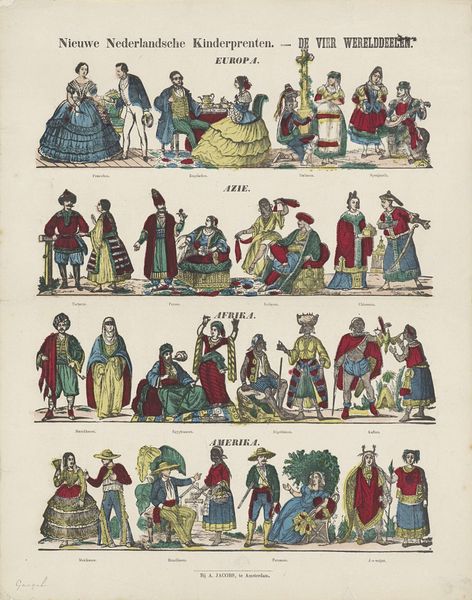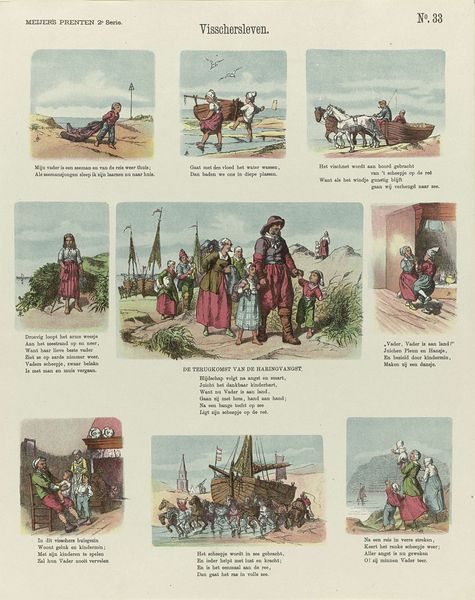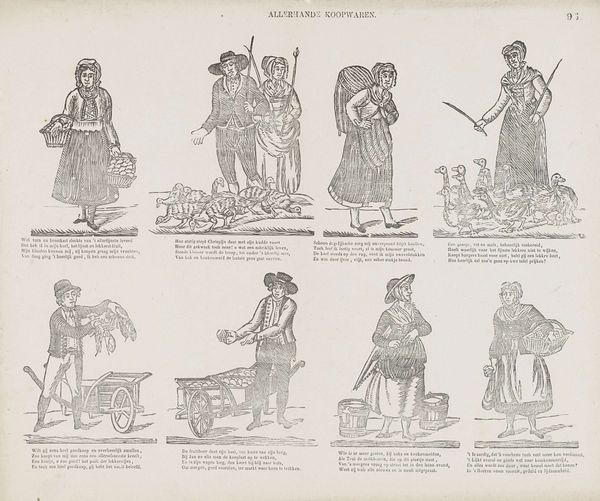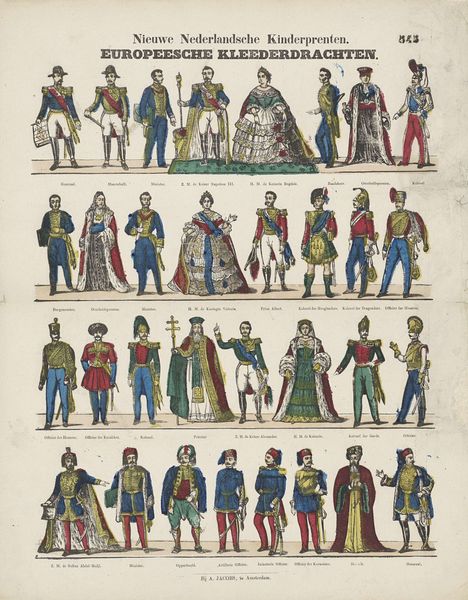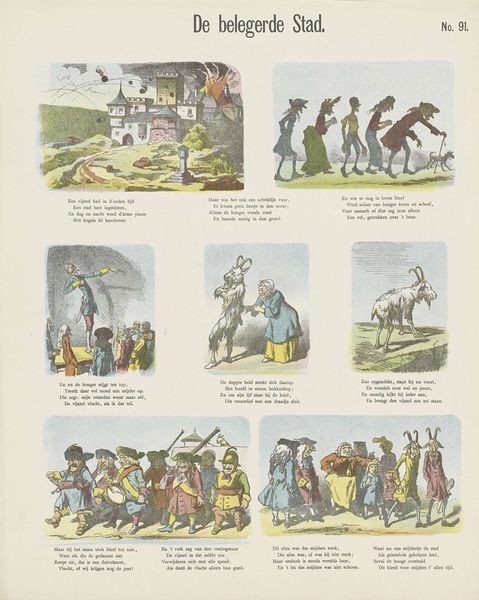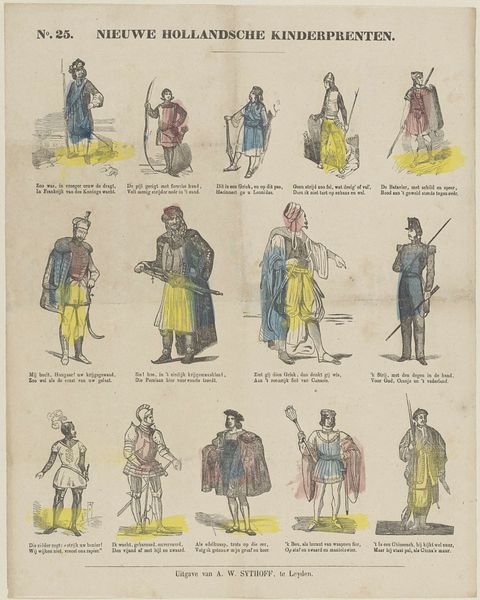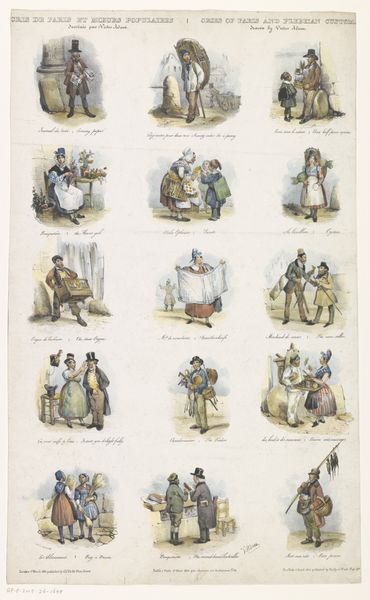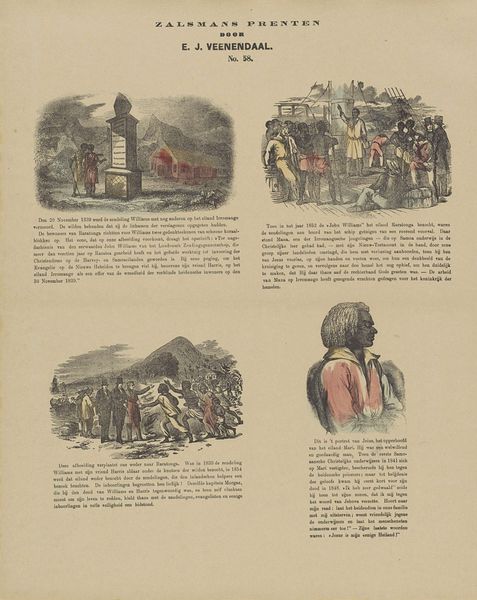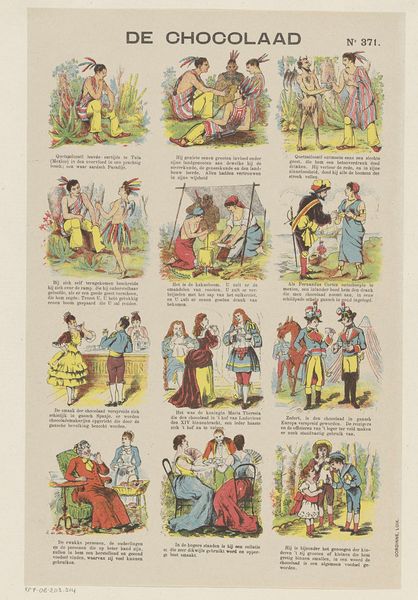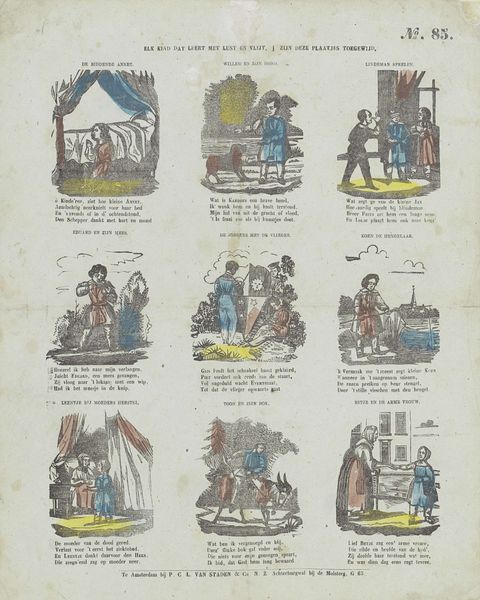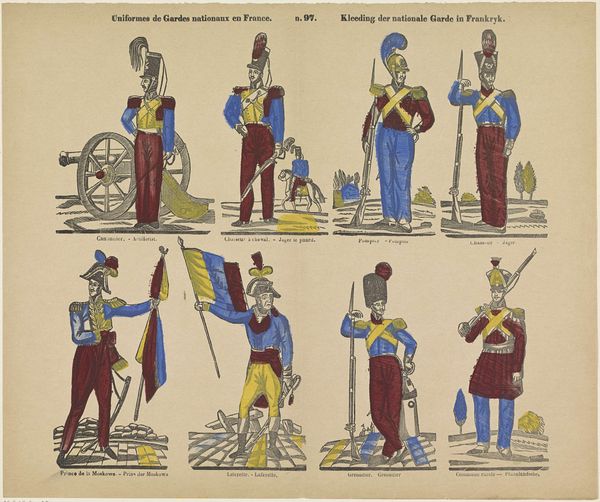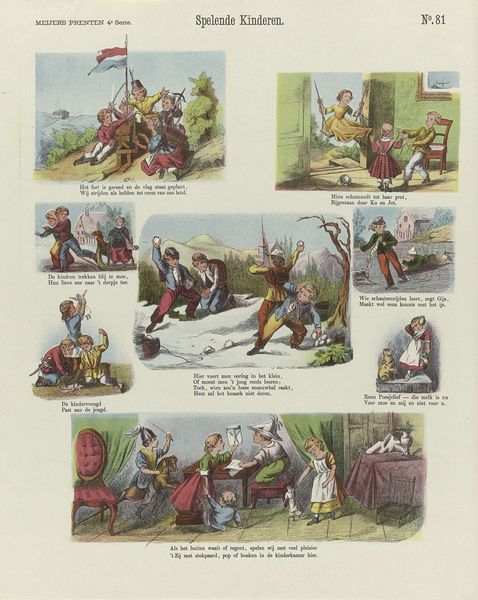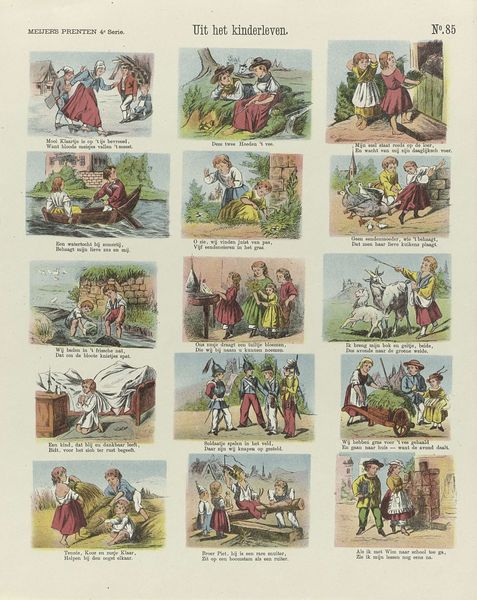
lithograph, print
#
portrait
#
lithograph
# print
#
figuration
#
genre-painting
Dimensions: height 429 mm, width 344 mm
Copyright: Rijks Museum: Open Domain
Curator: Let's discuss this print, "Kindermaskerade," created by De Ruyter & Meijer in 1881. It's a lithograph featuring children in various costumes. Editor: My immediate impression is how fascinatingly detailed the piece is. The sheer number of figures crammed onto one print is impressive, and there’s a lightness of touch to the way the costumes are depicted with small details. Curator: Indeed. As a print, "Kindermaskerade" speaks to the industrialization of image-making. We have here a means to disseminate visuals, costumes, and identities on a potentially wide scale. Look at the way the colors are printed; it suggests this was made for mass consumption rather than as an elite art object. Editor: From a historical perspective, it seems like a social commentary, presenting a masquerade of different social types or national identities through these child figures. I wonder how such displays functioned in constructing a child’s sense of identity, perhaps a projection of societal ambitions and hierarchies. The performative aspect is strong, pointing towards anxieties of class or nationality. Curator: That performative angle ties into the labour of representation itself. A print like this involved a complex chain of makers, from the initial designers to the printers. These were carefully crafted visual products marketed and sold to families to adorn their homes. The accessibility and cost would suggest an intended middle-class audience. Editor: I'm struck by how these kinds of printed images might play a part in solidifying or even challenging existing social hierarchies in the late 19th century. Who had access to these images? And what was the cultural context surrounding their display and discussion? It seems to operate both as instruction and aspirational desire. Curator: Thinking about the materiality – the paper, the ink, the printing techniques – underlines its democratic nature. Its very existence as a mass-produced print is intertwined with its cultural significance. Editor: Right, seeing it this way highlights not only what's *in* the image but also what the image *does* within society. Curator: Yes, from a close examination of its physical properties and production to how it reflects and shapes societal ideas of identity. Editor: It really encourages us to think about the interplay between representation, class, and childhood itself.
Comments
No comments
Be the first to comment and join the conversation on the ultimate creative platform.
